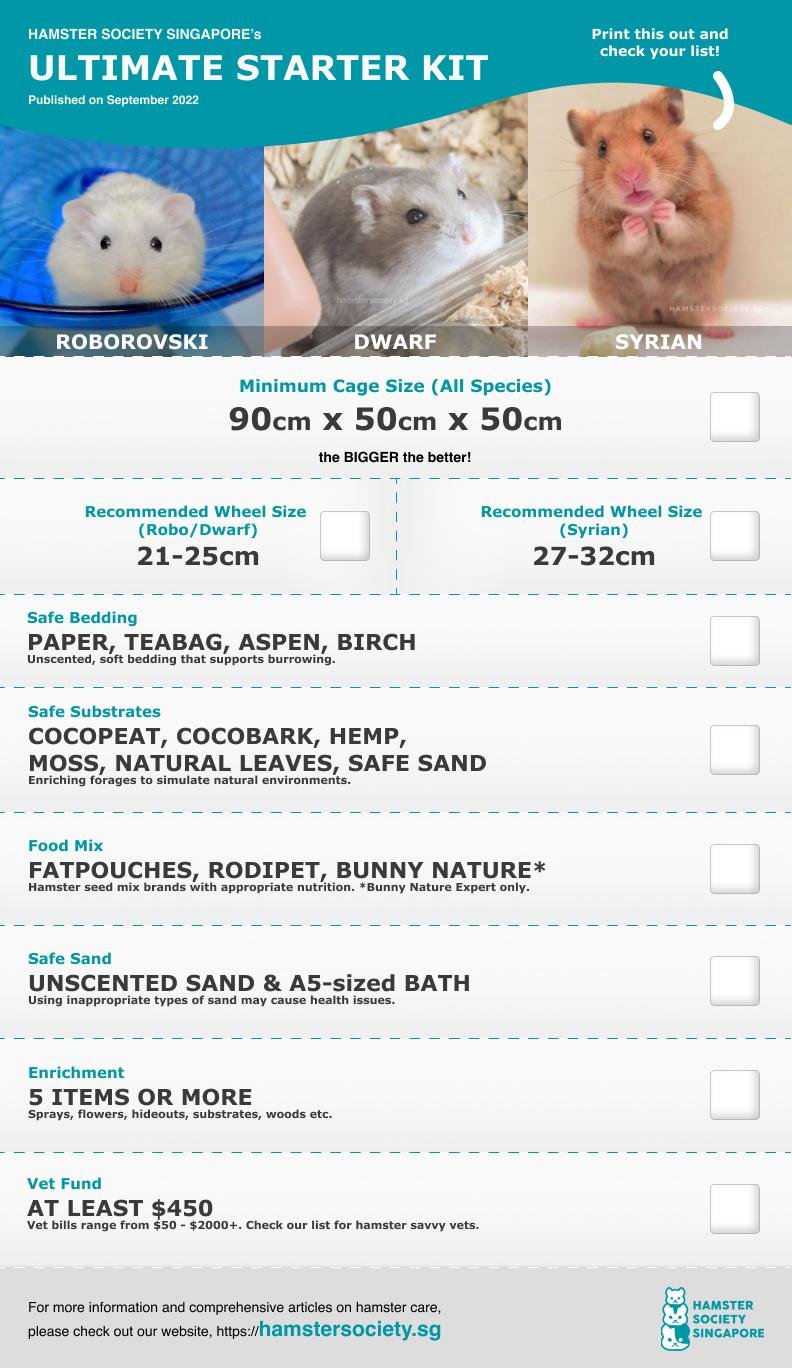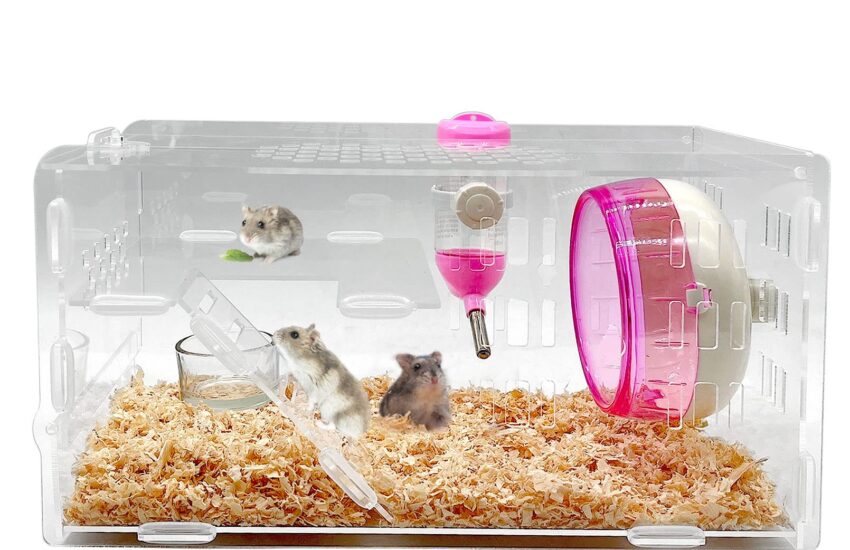Hamster Enclosure Ventilation Tips
The Importance of Proper Ventilation for Your Hamster
When setting up a space for your pet hamster, **enclosure ventilation** is a critical factor that is often overlooked. Adequate airflow helps in maintaining a healthy environment, preventing the buildup of harmful gases and molds that can affect your hamster’s health. A well-ventilated cage not only provides your furry friend with fresh air but also helps control humidity and odor levels. Ensuring your hamster’s habitat has optimal ventilation is essential to their well-being, and here are some tips to achieve just that.
Choosing the Right Cage Design for Maximum Airflow
Selecting the right enclosure design is essential to ensure optimal ventilation for your hamster. Cages with **wire tops** or mesh panels are excellent choices, as they allow **air to circulate freely** while preventing escapism. Opt for materials that are non-toxic, durable, and easy to clean. Additionally, consider the size and layout of the cage; the more open the design, the better the airflow. Avoid solid walled containers that can limit air movement. For instance, a glass tank can be aesthetically pleasing but may require additional modifications for proper ventilation, such as adding air holes or a mesh cover.

Strategic Placement of Your Hamster’s Cage
The placement of your hamster’s enclosure greatly impacts air circulation. Positioning the cage in a **well-ventilated area**, away from direct sunlight or heating sources, can help maintain stable temperatures and prevent overheating. Avoid placing the cage in rooms that are overly stuffy or have limited airflow. If possible, ensure that the area where the cage is located can accommodate cross-ventilation, such as near an open window or a door that is frequently opened.
Implementing Additional Ventilation Techniques
If the design of your hamster’s cage doesn’t provide sufficient ventilation, consider **adding external ventilation solutions** such as small fans. These lightweight, quiet fans can help in circulating air without being intrusive. It’s important to ensure that the airflow from the fan does not directly blast onto your hamster’s habitat, as it can create drafts that might stress your pet. Instead, position the fan in a way that encourages overall airflow in the space without affecting the comfort and safety of your hamster.
Monitoring and Maintaining Air Quality
Monitoring your hamster’s enclosure is crucial for ensuring a healthy living environment. Regular observation of your pet’s behavior can indicate whether they are comfortable within their habitat. If you notice signs of distress or discomfort, it might be time to check for potential ventilation issues. Furthermore, maintaining a clean enclosure is vital for air quality. Frequent cleaning helps prevent odor accumulation and the growth of mold or bacteria, which can thrive in a poorly ventilated space.
Routine Cleaning Practices for Better Air Flow
To enhance the **ventilation** of your hamster’s enclosure, establish a routine cleaning schedule that includes the removal of bedding and waste. Using absorbent and safe bedding materials can contribute positively to air quality. Aim to clean the cage once a week, with spot cleaning more frequently to manage mess and odor. During the cleaning process, replacing substrates with new bedding promotes not only cleanliness but better air circulation. Ensure any products you use are safe for your hamster to prevent exposure to toxic substances that could hinder their comfort and health.
Signs Your Hamster May Need More Ventilation
Keeping an eye out for specific indicators can be helpful in understanding whether your hamster’s enclosure requires better ventilation. Signs such as lethargy, excessive scratching at the cage, or noticeable smell can suggest that airflow is compromised. Additionally, if you’re observing damp bedding or condensation within the habitat, it’s time to reassess your ventilation strategy. Making timely adjustments can prevent potential respiratory issues and ensure your hamster thrives in their living environment.
Using Accessories for Improved Air Quality
Consider using certain accessories that can further improve airflow and overall air quality in your hamster’s habitat. Providing various **hideouts** made of breathable materials allows your hamster a sense of security while benefiting from fresh air. Designing your cage to include platforms or tunnels with proper spacing can also enhance airflow. Remember that while your hamster enjoys hiding, it’s essential that these accessories do not obstruct ventilation.
Choosing Safe Materials for Accessories
When selecting materials for your hamster’s habitat and accessories, ensure that they are non-toxic and allow for proper airflow. Wooden houses or tunnels made from safe untreated wood can be great for ventilation and allow your hamster to gnaw on them. Avoid painted or heavily treated surfaces that might emit harmful particles into the air. Natural materials are typically the best choices, as they are both safe and promote good circulation within the enclosure.
Integrating Plants into Your Hamster’s Environment
Many pet owners find that incorporating live plants into their hamster enclosures helps with air quality, but it’s crucial to choose **non-toxic** species. Researching plants that are safe for hamsters can provide additional ventilation potential. Additionally, plants like certain types of ferns or spider plants release oxygen and improve air freshness, making them beneficial companions without harming your pet. Always ensure that the plants are positioned where your hamster cannot chew on them to prevent any toxic ingestion.
Key Takeaways
- Proper ventilation is essential for your hamster’s health and wellbeing.
- Choose cage designs that encourage **airflow** and avoid solid walled containers.
- Regular cleaning and maintaining air quality boost comfort for your pet.
- Monitor habitat signs for airflow issues and adjust accordingly.
- Experiments with plant inclusion can create a fresher miniature ecosystem for your pet.
FAQ
1. What are the best materials for hamster bedding to promote ventilation?
Using bedding made from safe, absorbent materials such as paper or aspen shavings helps improve airflow while being comfortable for your hamster. Avoid cedar and pine shavings, as they can emit fumes that are harmful to their respiratory systems. Regular replacement and spot cleaning are necessary to ensure good **air quality**.
2. How often should I clean my hamster’s cage to maintain proper air quality?
It’s advisable to clean your hamster’s cage weekly while performing spot cleaning a few times a week. This frequency helps manage odor and prevent mold buildup, both critical for maintaining proper **ventilation**. Keeping the habitat clean ensures that your hamster remains healthy and comfortable.
3. Can I use a fan to help with my hamster’s ventilation?
Yes, a fan can be used to enhance airflow around your hamster’s enclosure. However, make sure it does not create direct drafts on the cage as this can stress the animal. Placing the fan in a position that encourages **natural airflow** can aid in maintaining a comfortable environment.
4. How can I tell if my hamster is comfortable with the air quality?
Signs that your hamster is comfortable include active exploration, a healthy appetite, and normal sleeping patterns. In contrast, lethargy, excessive scratching, or unusual smells can indicate ventilation problems. Monitoring their behavior can help you determine if the air quality in the enclosure is adequate.
5. Are there any types of plants that are safe for hamsters when included in their cage?
Yes, plants such as spider plants and certain ferns are considered safe for hamsters and can contribute positively to the air quality in their environment. Always conduct your research before introducing any new plant and ensure it does not pose a risk of ingestion.
6. What cage setup is best for hamster ventilation?
A cage with wire mesh sides or mesh tops provides maximum ventilation. The design should allow for sufficient **airflow** while providing a secure environment for your pet. Avoid glass tanks unless they are modified properly to promote air circulation.
7. How can I improve ventilation in an existing glass aquarium setup?
To improve the ventilation of a glass aquarium, drill holes in the top or invest in a mesh lid that can be securely fastened. This ensures proper air exchange while keeping your hamster safe and contained. You may also consider adding a small fan to help move air around.
